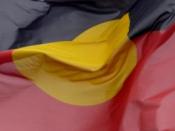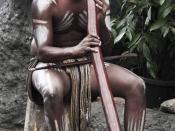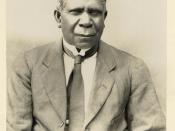There are some common threads of argument linking together main aspects of how Australians see themselves and what they see as important in defining our culture and identity, there is still contention over the importance of issues of Australia's history, indigenous members and white European settlers and their impact on the indigenous population. Quite often, the Australian landscape is also given great prominence, especially when used in conjunction with the above aspects of Australian culture and identity. Four texts of different media all contain elements arguing for a common trend of ideas. Despite this, there are still some differing opinions of the messages that should be taken from the texts.
The Evening star is a song from the Song cycle of the Moon-Bone written by the Wonguri-Mandjigai. The Wonguri-Mandjigai song cycle of the Moon-bone from Arnhem Bay tells how Moon, a man, lived with his sister, Dugong, by the side of the claypan which in the rainy season, becomes a billabong.
Dugong complained that the place was dangerous because the leeches would bite her as she searched for edible roots and so one day she went into the sea and turned into a dugong. This is an Aboriginal mythical tale that deals primarily from the perspective of the Aboriginal celebration of their culture within Australia, and of their affinity with the land. "The evening star" described in the song is a form of the 'lotus bloom' whose long stalk is a string held by the spirits of the west, the star represents a guide and sense of wonder and heaven for the aborigines. There are several symbols that are used in this poem that symbolize fundamentally important parts to the Indigenous culture. "The lilies and of the Dugong," the lilies traditionally in Aboriginal culture are a symbol of strength and...


